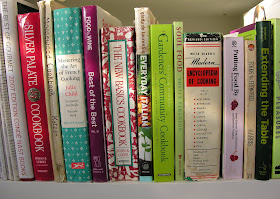
I look forward to this post-Thanksgiving soup almost as much as all the special dishes prepared for the holiday itself. I have fond memories of my mother picking all the leftover meat off the turkey and starting the bones to simmer in a large pot on the stove, while the last dishes were washed and second rounds of pumpkin pie were lazily served.
This soup also reminds me of my favorite Greek restaurant in Vienna, Virginia called Scorpios. We were devout customers originally introduced to the authentic fare by my Aunt Charlene who seemed to have an uncanny knowledge of where to take her hungry nieces and nephews when visiting. Scorpios' lemon chicken and orzo soup could bring one back from the dead. Its broth was rich and bright with citrus and herbs, and gently filling with the tender chicken and orzo. I will never forget it.
What I like most about this soup is how easy it is to throw together after the sweat and tears of Thanksgiving prep. After the bones simmer all day, producing the gelatin rich stock, just add turkey scraps, celery, carrots, herbs, lots of lemon and cooked brown rice. A bowlful soothes and satisfies without the heaviness of days prior. And it freezes well too, allowing you to thaw, sip, and reminisce on another blessed holiday past.
Lemon Turkey and Rice Soup: (serves 8-10)
*1 turkey carcass (preferably free-range/grass fed. This one came from East Fork Farm)
*water
*2 lemons
*4 celery stalks, sliced
*5 carrots, sliced
*2 bay leaves
*1 1/2 tsp dried oregano
*sea salt and pepper
*leftover roasted turkey meat, shredded (white and dark)
*1/2 cup fresh flat leaf parsley, chopped
*3 cups soaked and cooked brown rice
*3 Tbsp unsalted butter
Place turkey carcass and stray bones in a very large soup pot filled 3/4 full with cool water. Add 2 Tbsp white vinegar and 1 lemon cut into wedges.
Simmer for 4-6 hours. Strain into a large bowl. Cool and/or refrigerate. Skim most fat from top of stock.
Return about 14 cups of the stock to the washed soup pot. Add carrots, celery, bay leaves, and turkey. Season with sea salt and pepper. Simmer until vegetables are tender. Add oregano. Continue to cook until broth reaches desired depth. Adjust seasonings to taste. Add juice and zest from half of second lemon, parsley and rice. Add more lemon and zest to taste. Remove from heat. Add butter and stir until melted. Allow to cool slightly before ladling into bowls and serving.
*This post was graciously featured in the December 2010 issue of Plant Healer Magazine, a journal of traditional Western Herbalism.
























